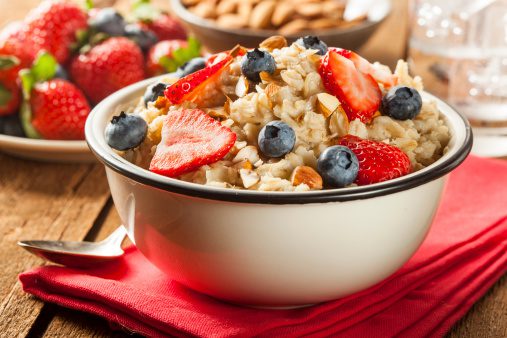Timing your fibre with your run

Fibre, important in everyone’s diet, is especially valuable to athletes. It’s slow to digest and slows down digestion of other foods in your stomach as well, which is a great thing for triatheltes. A slower, tamer rate of digestion gives you a moderate, steady stream of nutrients, making for an easier long run without the highs and lows that can come with mismatched and badly timed fuelling.
But anyone who’s downed a bowl of high-fibre cereal shortly before a morning workout knows it’s not so simple. What makes fibre so great for runners is also what makes it so tough for to get right. Being slower to digest, fibre is known for causing some rough runs. It is associated with serious upset stomachs if not timed correctly.
Firstly, fibre is found in a few different foods which are generally eaten at different times of the day. You want to allow two or three hours for your stomach to settle before heading off on a run. This could mean avoiding it with breakfast and trying to get your fibre in with dinner. It may also mean the opposite, eating fibre in the morning in preparation for a lunch or evening run. Your life will dictate these and there are ways of fitting it in with any meal.
Bran has huge amounts of fibre and is a great food for runners, though it’s also very commonly found in breakfast foods. Cereals, muffins and brown breads are high in fibre, so if you’re a morning runner consider having your bowl of cereal once you’re home from your workout. Fruit, another common breakfast option, is also high in fibre.
Beans, leafy greens and broccoli have plenty of fibre. These tend to be eaten with dinner (though beans are also common in burritos, one of my personal favourite lunch foods), so are great options for morning runners but not so great if you run in the evening.
Ultimately, your schedule is going to dictate when works best for you, and your body may also respond in different ways than others. Trial and error, though sometimes a slightly less attractive option, will be the best way to find what works for you, though a general rule of not loading up on fibre shortly before a run or race will generally hold true.

